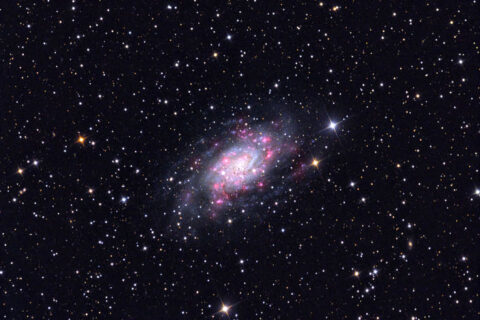How our galaxy was formed: FAU researchers X-ray the universe
eRO-STEP research group from the field of astrophysics receives further funding
Neutron stars, supernova remnants and black holes: they all emit X-rays that help physicists to draw conclusions about the development of the universe. Until now, they have focused on objects in the Milky Way and its nearest satellite galaxies, which are closer and therefore brighter than others. Researchers at the Astronomical Institute of the Erlangen Center for Astroparticle Physics (ECAP) at FAU now have a new goal: they will include more distant and therefore fainter sources in their analyses. In this way, they hope to find out how individual galaxies were formed and how they will continue to develop. In this second funding period, the research group is now being funded again by the German Research Foundation (DFG) for three years.
Since 2021, the research group “eROSITA Studies of Stellar End Stages” (eRO-STEP) has been investigating astrophysical sources in space that emit X-rays. These include, for example, compact objects, i.e. white dwarfs, neutron stars and black holes, or gas between stars that is produced when stars die. “This gas can have different phases, for example cold and hot phases.
The hot phases are so hot that they don’t radiate optically, but instead emit X-rays,’ explains Prof. Dr. Manami Sasaki, spokesperson for the research group at FAU. With the help of the ‘eROSITA’ X-ray telescope, FAU, as one of the core institutes of the German eROSITA consortium, scanned the entire sky for such sources from 2019 to 2022 and recorded where X-rays occur. “When we observe X-rays in space through the telescope, we can examine the radiation at higher energies,” says Prof. Sasaki. “From this, we can draw conclusions about how individual objects have behaved and will behave in the future.”
In recent years, Prof. Sasaki and her team have focused on closer and therefore brighter sources and source populations in the Milky Way and the Magellanic Clouds, which are the largest satellite galaxies in the Milky Way. For example, they have discovered previously unknown supernova remnants – an indication that stars have been ejected from the Magellanic Clouds or torn out between them and the Milky Way.
In addition to new data, the researchers have examined eROSITA for technical uncertainties and developed new analysis routines. In the new funding period, the scientists will investigate more distant and therefore less luminous sources and conduct a study of the entire Milky Way. The aim is to find out how individual galaxies such as the Milky Way and the Magellanic Clouds were formed and how they could develop in the future. In the long term, the research group wants to gain a deeper understanding of compact objects, large interstellar structures, interstellar shock waves and particle acceleration.
In addition to FAU, the Eberhard Karls University of Tübingen, the University of Hamburg, the Leibniz Institute for Astrophysics Potsdam and the Max Planck Institute for Extraterrestrial Physics are involved in Research Group 2990 eRO-STEP.
Directly to the research group
Further information
Prof. Dr. Manami Sasaki
Dr. Karl Remeis Observatory Bamberg – Astronomical Institute
manami.sasaki@fau.de
